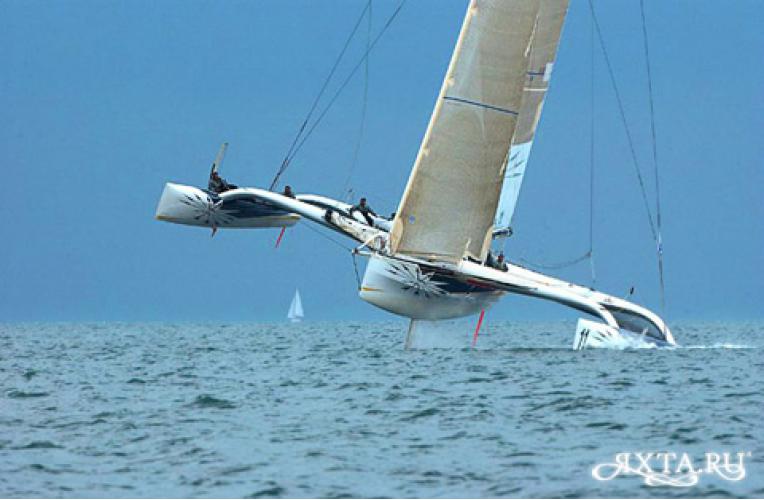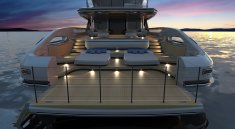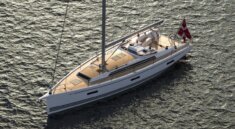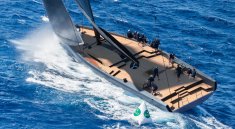A racing trimaran is a truly fantastic vessel.
It looks great, costs a lot of money, and half the world's young elite dream of driving one. What is he, a strange sea animal - a trimaran?
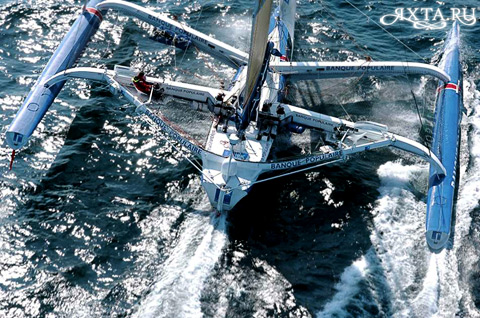
Desired
Not so long ago, I had the opportunity to dine in the company of two young promising businessmen. We were friends in childhood. Together we played in the yard and swam into the unknown fabulous distances on board our sandbox ship with a classic red mushroom. The mushroom was our scarlet sail. Today, my friends, having received a decent education, cheerfully climb the career ladders of oil companies. Both, not without reason, see themselves in the role of "young oligarchs" by the age of thirty-five. After listening to their ambitious plans for life, I asked: “Vasya, what will you do first of all when you really get rich?” Vasya, rolling his eyes dreamily, answered without hesitation: “Like what? I’ll buy myself a racing trimaran!” And Petya added: “Me too! I'll buy one for myself too! It turned out that boyish dreams of the sea still linger in their harsh business hearts.
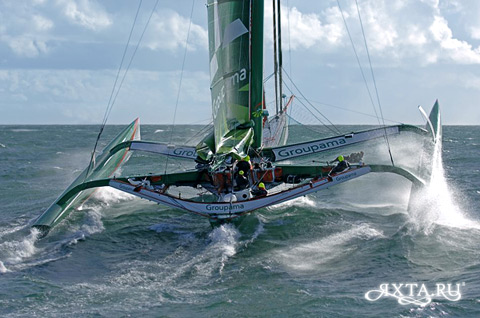
Anyone who has seen at least once what a racing trimaran is can understand my friends’ unexpected answer. In our latitudes, where things are bad even with ordinary plastic boats, it is not at all easy to come across such a rare “bird” as a racing trimaran, which is considered exotic all over the world. However, Vasya, while on a business trip to St. Petersburg in 2005, was amazed by the sight of these catamarans flying over the waters of the Neva, against the backdrop of the spire of the Peter and Paul Fortress. Last year, the final stage of the regatta on ocean yachts - trimarans of the Formula 60 Nokia OOPS CUP class was held in St. Petersburg. This regatta began its history in 2001. The race includes high-speed passages on the open sea and races in the waters of port cities of the Baltic Sea. Thus, these beautiful ships were seen for the first time in Russia. And I think more than one heart trembled at this sight.
Russian
It's funny, but the design of these high-tech ships, the developers of the 20th century, spied on the natives of Polynesia. And those, in turn, peeped it from the British back in the 17th century. Two- and three-deck ships, on which it was convenient to quickly move between the islands, were called by the natives, unusual for the European ear, the word "catamaran". Three-deck catamarans, without further ado, were called "trimarans". It is believed that such a name for ships of this type was given by our compatriot, a Russian emigrant and the creator of sailing trimarans in their modern form - Victor Chetchet. During the First World War, he was a pilot of the Royal Aviation, and after the war he emigrated to America. He lived in New York from the 40s until his death. There, Chatchet built two trimarans: Eggnog 1 and 2. Both vessels were made of plywood and reached a length of 24 feet. At that time, they did not gain much popularity, so the inventor had to earn his living by writing portraits and landscapes to order.
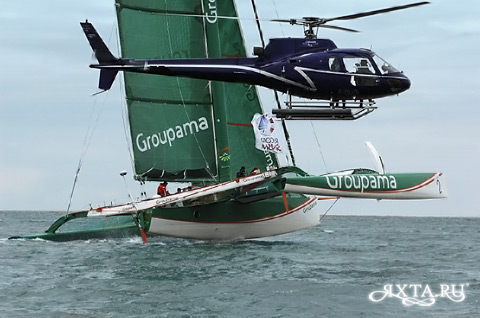
True interest in trimarans arose in the 70s of the last century. Why? Firstly, new materials appeared that made it possible to solve many technical problems associated with the construction of trimarans, and secondly, at that time multihull ships came into fashion. Young people were crazy about small sports catamarans that developed high speeds, and experienced yachtsmen were looking for new types of vessels in order to circumnavigate the world or participate in races.
Outcast
Trimarans are, in a sense, renegades in the world of yachting. Proud and beautiful hermits, never caught on in mass production. The fact is that on the wave they are rather poorly controlled, have a sharp roll and experience strong shocks that can lead to destruction. Great initial stability at small angles of heel does not protect trimarans (as well as catamarans) from rapid capsizing if wind and wave conditions, as well as steering errors, lead to a slight excess of permissible heel angles. And then it is almost impossible to put a catamaran and a trimaran "on an even keel" in the sea.
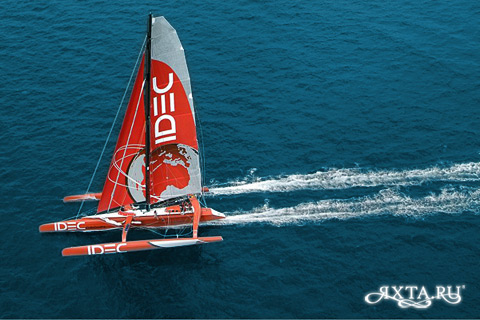
All this makes, until now, to treat cruising multihull yachts with a certain caution, although in the 1972 transatlantic races, trimarans performed very well, taking first, third and fifth places. And until now, the lot of trimarans is a sport. There is nothing wrong with that, because even on Formula 1 cars, it would never occur to anyone to go to the country on weekends.
Racing
Today, the evolution of trimarans is due to the preparation of these vessels for participation in competitions. The main class of racing trimarans is Formula 60. It is in this class that the famous ORMA championship, the most interesting and prestigious multihull competition in the world, is held.
In the ten years of its existence, these competitions have helped bring to light such now world-famous trimarans as Broceliande, Gitana 11, Groupama 1, 2 and 3, Banque Populaire 3 and 4, Geant, Sodebo, La Trinitaine and many others. The intensity of these races is given by the fact that, as mentioned above, any mistake in trimaran control leads to irreparable consequences. Also, the course of the Grand Prix can be affected by the weather, and in the most dramatic way. So, in 2002, a series of storms scattered the fleet over the distance. As a result, out of 18 vessels of this type that participated in the race, only three yachts reached the finish line, and the only trimaran, Fujifilm by L. Peyron, fell apart and sank under the blows of the elements. It also happens that an inaccuracy in control robs a team of a chance to win just before the finish line, as was the case last year with the trimarans Gitana 11 and Fonica.
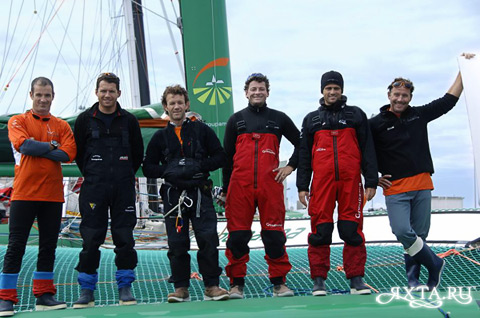
In terms of technology, today Formula 60 trimarans are mainly built on the basis of carbon materials, which significantly lightens the weight of the vessel. Also, designers are experimenting a lot with sails. As a result, under favorable conditions, a racing trimaran today is capable of reaching speeds of up to 30 knots.
Shipyards that build racing-class trimarans can be counted on the fingers. Often several shipyards, design bureaus and more than one architect are involved in such a project. It would be fair to say that the undisputed leader in the construction of these vessels, not only class 60, but even lower, is the French company CDK Technologies. In this difficult task, she is actively assisted by the creative team of the VPLP Yacht Design shipyard.
The history of CDK began 20 years ago with a venture by Hubert Desjoy to build composite boats. Since then, the shipyard has pioneered the creation of such well-known multi-hull Formula 1 marine vessels as Olivier de Kersauzon's Poulain, Groupama II, Geant, Belgacom and Ocean Alchemist.
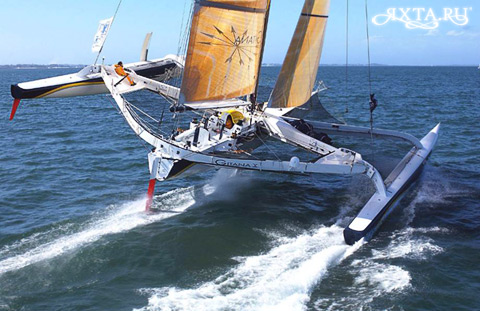
Each trimaran is unique. The most difficult thing, say the developers, is to capture the spirit of the future car. The peculiarity of the sports trimaran project is that it is difficult to translate it into reality! But that's exactly what CDK does, thanks to its knowledge. The main advantage of this company's technologies lies in the virtuoso handling of composite materials. Every detail here is carved according to unique plans, designed to fulfill its unique functions. To date, CDK has at least six projects to be proud of.
The very first trimaran to roll off the stocks of CDK Technologies in 1985 was the 23m Poulain. Today it is called Idec and is notable for the fact that it has been sailing the seas and oceans for 20 years, still winning competitions. She was rebuilt many times, she changed owners, names, crews, but Poulain has always been an excellent vessel, proving the reliability of CDK technology.
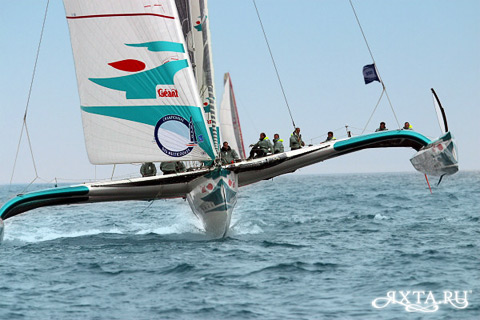
Two other builders' favorites are Banque populaire II and Belgacom. These 60ft trimarans were produced specifically for the 2002 Orma Championship. The winner of many other competitions under the command of Captain Michel Dejoyo in 2002 was the 60-foot Geant.
Separately, it is worth mentioning the cooperation of CDK c with the world-famous Groupama racing team, captained by, perhaps, the most recognizable trimaran driver in the world, Frank Cammas. He participated in 55 different races, of which he was among the winners 28 times, and the title of the best trimaran driver on the planet Frank Cammas won 37 times. In 2004 CDK built the innovative Groupama II trimaran for his team. For more than a year and a half, CDK and Groupama have been building this vessel, especially for participation in the Grand Prix. This trimaran has not undergone any major transformation since its first season at the de Calvi Grand Prix in September 2004. In October of that year, he raced to victory at the Marseille Grand Prix.
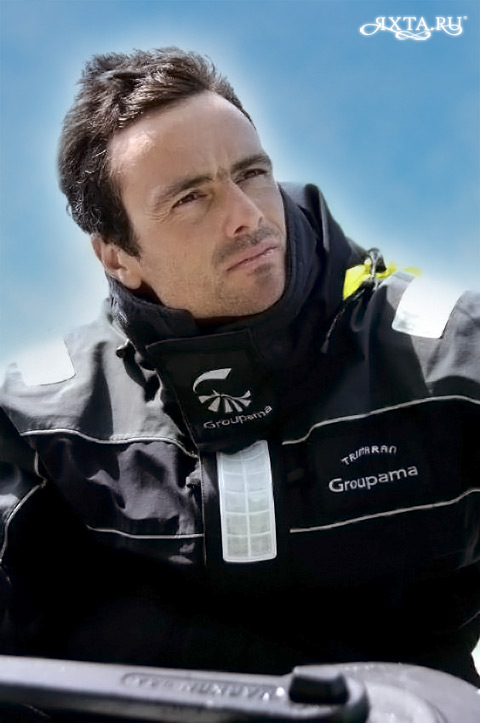
Groupama 2 is the latest generation of trimarans. With a very slender hull, this boat is the lightest in the fleet. For the last six years the boat and its skipper have been the best in the ORMA championship. The youngest but no less beloved member of the CDK trimaran family is the 50ft Crepes Whaou. The creators call it a compromise, due to the fact that it is somewhat smaller than its older brothers and its characteristics are lower than those of the "older ones". However, CDK believes that this trimaran is great for beginner skippers.
Expensive
And, returning to the dream of my old friends about their own racing trimaran, I want to say the following. Guys, you will have to work hard and really make a whole lot of money. The construction of one trimaran of the Formula 60 class and below will cost at least 3 million euros. Maintained trimarans start at a price of one and a half million euros. But buying a trimaran is not all. Such a complex, delicate and thin thing as a trimaran needs to be carefully stored somewhere and constantly maintained. And this also costs a lot of money. Therefore, when you realize your dream, call us, we will sail to distant lands, as in childhood, under scarlet sails.
Text: Ekaterina Sokolova, flotilia.com

